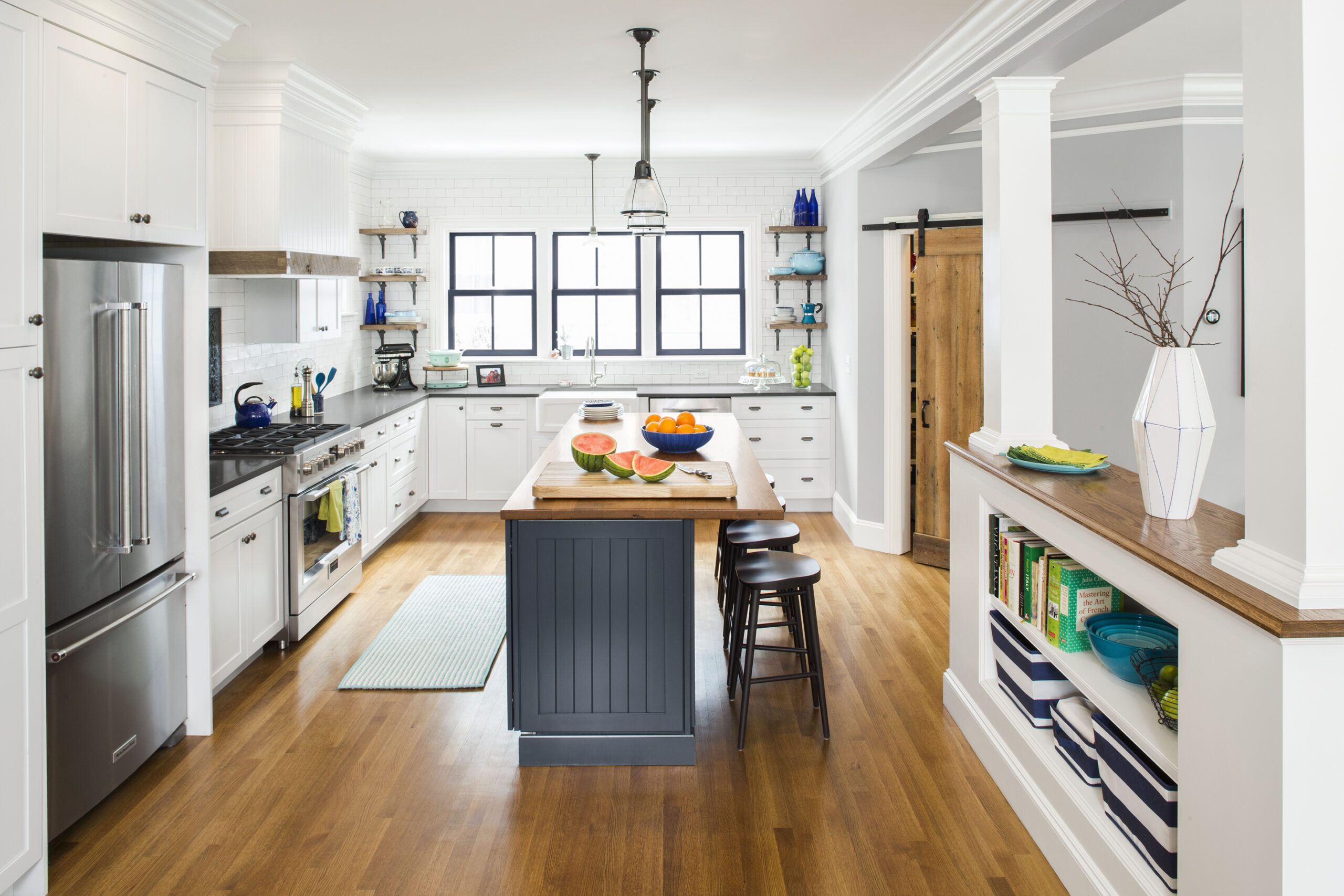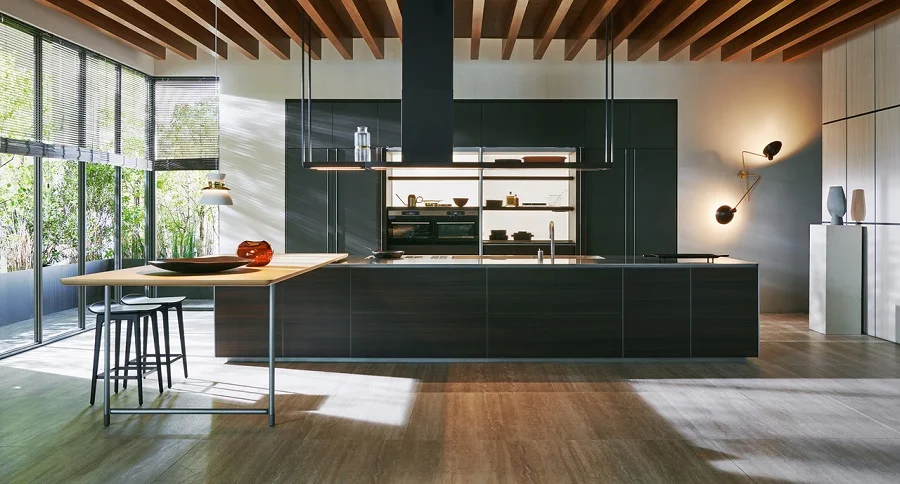A remodel might be in order if your kitchen has a dated style or layout that no longer suits your family’s needs. Your goals for the project, such as increasing your home’s resale value or improving the flow of traffic through the room, will influence the direction the remodel takes.
Designing a kitchen remodeling project involves determining what improvements you want and establishing your budget. It is also essential to consider how much of the work you are willing to take on yourself, as this can reduce your overall cost. Generally speaking, if you can do most of the work yourself, it will be cheaper than hiring a general contractor. Visit https://www.kitchenremodelsandiegocal.com/ to learn more.
The layout of a kitchen is one of the most important elements in designing a new space. This will determine how the room is used and what features it has to offer. A good layout will be able to accommodate all the appliances and other components while providing sufficient space for food preparation. It is also crucial to consider storage solutions, as these will be a big part of your kitchen’s function.
During this phase, you should also consider the kitchen’s style and decor. A remodel can be a great opportunity to add a splash of personality to your kitchen, so don’t be afraid to experiment with different styles. You can even incorporate a theme, such as an industrial, country or traditional look into your remodel.
Once the layout is designed, you can start on the structural changes and utility work. This will include adding or moving walls, plumbing and electrical. In many cases, changing the footprint of a kitchen requires rerouting of existing plumbing and electrical lines, which can be expensive. It is also a good idea to replace older appliances with energy-efficient models to help save on utility costs.
Countertops are another significant component of the kitchen. They are often the focal point of a kitchen, and they can make or break the overall look of the room. Countertops come in a variety of materials, including granite and quartz. In addition to the material, homeowners should consider other factors, such as custom edge routing and honing. In addition, countertops are an excellent place to add ground fault circuit interrupter outlets, which will increase safety and resale value.
Layout
Whether your kitchen remodeling project is cosmetic or total gut, the layout of cabinets and other fixtures has a big impact on the overall look of your space. If the cabinets are not positioned correctly, it can throw off the flow of your room and make it harder to move around. If the floor plan needs to change, it’s important to know ahead of time what your goals are for the new kitchen. For example, are you looking for more storage? If so, work in pull-out pan racks, baskets or trash containers. These are flexible storage elements that can be added to both new and existing cabinets.
Another thing to consider is the number of cooks in your household. This will determine if you need more counter and storage space or extra appliances. Another important factor is the amount of natural light. Proper lighting can reduce shadows and make the space more inviting. It is also essential to prioritize adequate ventilation to reduce odors and smoke, especially during cooking.
The final decision you’ll have to make is whether to keep your existing cabinets or replace them. If you decide to keep them, your options are limited because the current floor plan is set up around them. However, you can add an island or swap some appliance locations to improve the layout of your kitchen.
If you’re considering a major remodel, you may need to tear down walls or relocate utilities in order to transform your kitchen into the space of your dreams. This can be a big undertaking that may take months, depending on the extent of the renovation. If you’re unable or unwilling to handle this step yourself, hiring a general contractor will be necessary.
Budget
When determining how much to spend on a kitchen remodel, homeowners must consider the scope of changes they hope to see. A kitchen remodel can range from cosmetic upgrades to a complete overhaul that takes the space down to the studs and starts over. This can dramatically alter costs. For example, demolition labor can be an expensive addition to a renovation project and can add up quickly if you’re changing the footprint of your kitchen or need to remove load-bearing walls. Additionally, changing the plumbing and gas lines can be expensive as well.
The largest portion of a kitchen remodel budget usually goes to cabinetry and hardware. These can range from basic stock cabinets to custom work. Ornate moldings, pilasters and other decorative elements can eat up your budget while simple, clean woodwork offers a more cost-effective option. Appliances also eat up a good chunk of the remodeling budget; energy-efficient models with smart features offer long-term savings but come at a premium upfront.
If you’re adding new windows, tearing down load-bearing walls or making other significant changes to the footprint of your kitchen, you may need to apply for permits from your city. This can increase your overall project costs and lead to delays. It’s also important to understand that some projects can take longer than expected and to plan accordingly.
Depending on the scope of your remodel, it’s possible to save some money by serving as your own general contractor and hiring and managing individual subcontractors yourself. This option can be risky, however, as mistakes made by inexperienced DIYers can result in costly problems down the road. If you’re not comfortable with the risks, a full-service general contractor is likely your best bet.
Materials
The materials used in your kitchen remodel will have a major impact on the aesthetic and functionality of the space. Selecting durable and high-quality materials is an investment, but it will save you money in the long run by minimizing maintenance and repair costs. In addition, premium materials are less prone to wear and tear, making them more resistant to damage from everyday use.
The cabinetry and storage solutions you choose are an essential part of your kitchen’s design. Choose from a variety of styles and materials, including natural wood and stone for a classic look or bold colors and patterns for a modern feel. You should also consider the layout and positioning of your cabinets to make sure they are accessible for daily tasks. For example, installing above-cabinet shelving for baskets and frequently used items can free up space on lower shelves where brooms and other cleaning tools are stored.
Countertops and backsplashes are also important for the look and functionality of your kitchen. Choose from a variety of materials, including granite, quartz, and ceramic tile. For a more natural look, try marble countertops, but keep in mind that it is softer than other options and can be easily stained or damaged. A poured concrete countertop is another option that provides a unique and eclectic style but also offers stain and moisture resistance.
Lighting is another crucial component of your kitchen’s aesthetic, and there are many options available to suit your taste. You can choose from recessed, track, and pendant lights. In addition to traditional fluorescent bulbs, you can opt for LED or incandescent alternatives. Be sure to consider the size of your kitchen and how much light you need before selecting a fixture.
Contractors
After the plans have been finalized, it is time to hire a general contractor (GC) to manage the project. GCs can make the remodeling process less stressful and more cost efficient by managing all the subcontractors who will complete the work. They are able to negotiate prices with suppliers and have a good idea of how much the job will cost from past experience.
Kitchen remodels often involve plumbing and electrical upgrades, which require specialized skill sets. Unless you have extensive construction knowledge and are comfortable with the required hand-on work, it is generally best to subcontract these tasks.
The first step in any kitchen renovation is demolition and removal of old materials and appliances. This is hard, noisy work that can be messy. Whether it is a small cosmetic upgrade or a full-scale gut remodel, the scope will be determined at this point. It could be as simple as replacing countertops and painting walls or it may involve removing load-bearing walls and reconfiguring the floor plan.
Many homeowners choose to add more storage space as part of a kitchen remodel. A professional remodeler can look at the current space and suggest ways to increase storage with additional cabinets, pantry shelves, nooks and corners, pull-out cabinet organizers, wall shelves, window seats or sliding shelves.
It is important to ask prospective contractors about their credentials and experience. Check to see if they have a contractor’s license and what insurance coverage they carry. A reputable contractor will also be an active member of the local or national professional trade association. This is usually a good indication of their level of professionalism and commitment to the industry.



